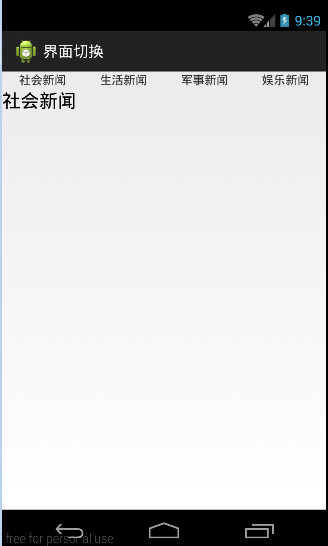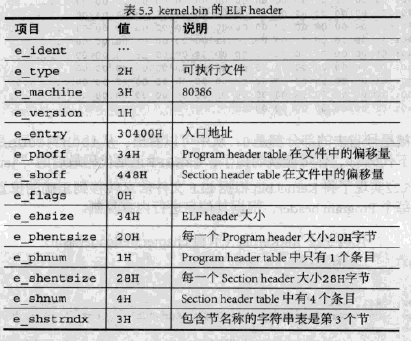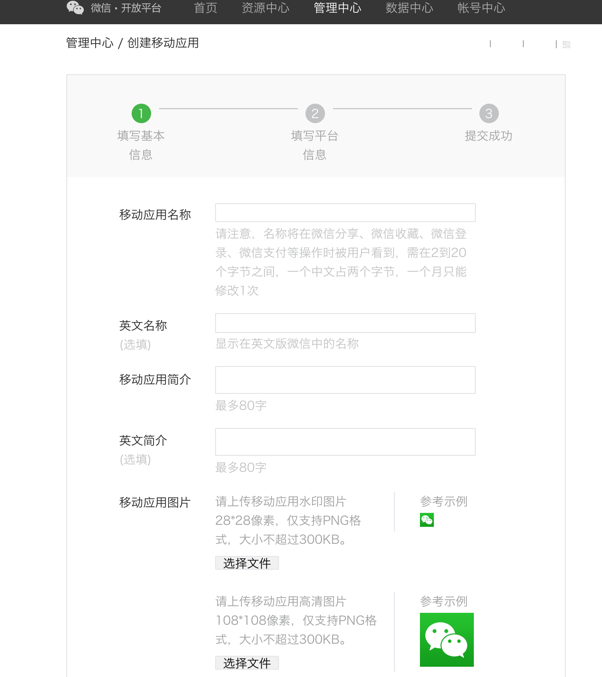編輯:關於android開發
本文結合之前的動態創建fragment來進行一個實踐,來實現用Fragment創建一個選項卡
本文地址:http://www.cnblogs.com/wuyudong/p/5898075.html ,轉載請注明源地址。
項目布局
<LinearLayout xmlns:android="http://schemas.android.com/apk/res/android"
xmlns:tools="http://schemas.android.com/tools"
android:layout_width="match_parent"
android:layout_height="match_parent"
android:orientation="vertical"
tools:context=".MainActivity" >
<LinearLayout
android:layout_width="fill_parent"
android:layout_height="wrap_content"
android:orientation="horizontal" >
<TextView
android:id="@+id/tab1"
android:layout_width="0dip"
android:layout_height="wrap_content"
android:layout_weight="1"
android:gravity="center"
android:text="社會新聞" />
<TextView
android:id="@+id/tab2"
android:layout_width="0dip"
android:layout_height="wrap_content"
android:layout_weight="1"
android:gravity="center"
android:text="生活新聞" />
<TextView
android:id="@+id/tab3"
android:layout_width="0dip"
android:layout_height="wrap_content"
android:layout_weight="1"
android:gravity="center"
android:text="軍事新聞" />
<TextView
android:id="@+id/tab4"
android:layout_width="0dip"
android:layout_height="wrap_content"
android:layout_weight="1"
android:gravity="center"
android:text="娛樂新聞" />
</LinearLayout>
<LinearLayout
android:id="@+id/content"
android:layout_width="fill_parent"
android:layout_height="fill_parent" >
</LinearLayout>
</LinearLayout>
新建Fragment1.java~Fragment4.java,其中Fragment1.java中的代碼如下:
public class Fragment1 extends Fragment {
@Override
public View onCreateView(LayoutInflater inflater, ViewGroup container,
Bundle savedInstanceState) {
return inflater.inflate(R.layout.fragment1, null);
}
}
其他幾個文件的代碼類似
新建fragment1.xml~fragment4.xml,其中fragment1.xml中的代碼如下:
<?xml version="1.0" encoding="utf-8"?>
<LinearLayout xmlns:android="http://schemas.android.com/apk/res/android"
android:layout_width="match_parent"
android:layout_height="match_parent"
android:gravity="center"
android:orientation="vertical" >
<TextView
android:id="@+id/textview1"
android:layout_width="wrap_content"
android:layout_height="wrap_content"
android:text="社會新聞"
android:textAppearance="?android:attr/textAppearanceLarge"/>
</LinearLayout>
其他幾個文件的代碼類似
MainActivity.java中的代碼如下:
public class MainActivity extends Activity implements OnClickListener {
private LinearLayout content;
private TextView tv1, tv2, tv3, tv4;
private FragmentManager fm;
private FragmentTransaction ft;
@Override
protected void onCreate(Bundle savedInstanceState) {
super.onCreate(savedInstanceState);
setContentView(R.layout.activity_main);
content = (LinearLayout) findViewById(R.id.content);
tv1 = (TextView) findViewById(R.id.tab1);
tv2 = (TextView) findViewById(R.id.tab2);
tv3 = (TextView) findViewById(R.id.tab3);
tv4 = (TextView) findViewById(R.id.tab4);
tv1.setOnClickListener(this);
tv2.setOnClickListener(this);
tv3.setOnClickListener(this);
tv4.setOnClickListener(this);
fm = getFragmentManager();
ft = fm.beginTransaction();
ft.replace(R.id.content, new Fragment1()); // 默認情況下Fragment1
}
@Override
public void onClick(View v) {
ft = fm.beginTransaction();
switch (v.getId()) {
case R.id.tab1:
ft.replace(R.id.content, new Fragment1());
break;
case R.id.tab2:
ft.replace(R.id.content, new Fragment2());
break;
case R.id.tab3:
ft.replace(R.id.content, new Fragment3());
break;
case R.id.tab4:
ft.replace(R.id.content, new Fragment4());
break;
default:
break;
}
ft.commit();
}
}
運行項目後如下效果:

 Linux內核系列—12.c.操作系統開發之從Loader加載ELF內核,順便解釋下函數調用過程 ●,12.celf
Linux內核系列—12.c.操作系統開發之從Loader加載ELF內核,順便解釋下函數調用過程 ●,12.celf
Linux內核系列—12.c.操作系統開發之從Loader加載ELF內核,順便解釋下函數調用過程 ●,12.celf實際上,我們要做的工作是根據內核的Program he
 用PopWindow做下拉框,PopWindow做下拉框
用PopWindow做下拉框,PopWindow做下拉框
用PopWindow做下拉框,PopWindow做下拉框 最近在做下拉框,本來想用spinner,可是spinner達不到項目要求,跟同學同事問
 Android性能優化之使用線程池處理異步任務
Android性能優化之使用線程池處理異步任務
Android性能優化之使用線程池處理異步任務 說到線程,我想大家都不陌生,因為在開發時候或多或少都會用到線程,而通常創建線程有兩種方式: 1、繼承Thread類
 接入微信分享過程的喜和淚
接入微信分享過程的喜和淚
接入微信分享過程的喜和淚 背景故事: 4月份從公司回到學校,要開始著手做大四的畢業設計。然而畢設的其中一個功能模塊便是——心情分享模塊,在記錄